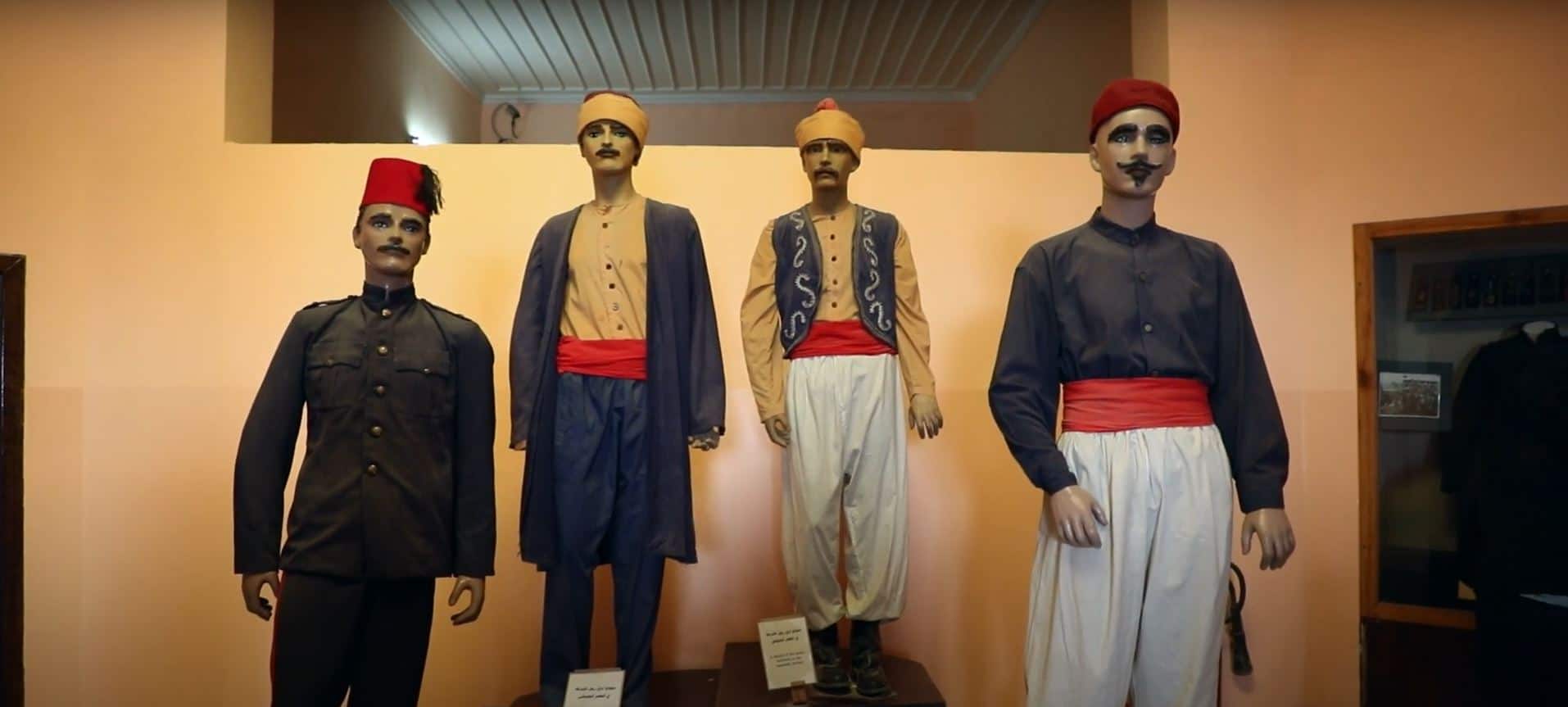The National Police Museum – Cairo – Egypt

Updated On: April 18, 2024 by Ahmed Samir
In the heart of Cairo, Egypt, a hidden gem awaits enthusiasts of history, culture, and law enforcement—the National Police Museum. This remarkable institution, though relatively young in its current form, delves deep into the annals of Egypt’s policing history, shedding light on the evolution of law enforcement from its early days to the modern era.
Beyond a mere collection of artefacts, the National Police Museum stands as a symbol of the nation’s commitment to preserving its rich heritage and educating the public about the vital role played by police officers throughout Egyptian history. Join us on a captivating journey through the corridors of this museum as we explore its origins, exhibits, and the profound impact it has on Egypt’s cultural tapestry.
The Origins of the National Police Museum
The National Police Museum was officially inaugurated in 2012, though its roots can be traced back to the early 20th century. It all began in 1917 when the first police museum in Egypt was established within the premises of the Police College. This modest endeavour aimed to educate aspiring police officers about the history of policing and law enforcement practices.
Over the years, the museum grew, collecting various artefacts, documents, and memorabilia. However, it wasn’t until 2012 that the National Police Museum found its permanent home in a grand building in the heart of Cairo. This new location provided ample space to showcase Egypt’s police heritage and symbolised its commitment to preserving its law enforcement history.
Exhibits at the National Police Museum
The National Police Museum boasts an impressive collection of exhibits that offer visitors a comprehensive overview of Egypt’s policing history. These exhibits are thoughtfully curated to educate, entertain, and pay homage to the men and women who have dedicated their lives to maintaining law and order in the country.
- Historical Uniforms and Equipment: As visitors enter the museum, they are greeted by a fascinating array of historical police uniforms, ranging from the early 20th century to the present day. Each uniform tells a story of the evolving role of the police force in Egypt. Accompanying the uniforms are displays of vintage police equipment, including handcuffs, truncheons, and communication devices.
- Crime Scene Investigation: This section of the museum takes visitors through the evolution of crime scene investigation techniques. From the rudimentary tools used in the past to the cutting-edge forensic technology employed today, the exhibit highlights the strides made in solving crimes and bringing perpetrators to justice.
- Historical Documents and Archives: The National Police Museum houses an extensive collection of historical documents and records that offer insights into the development of Egypt’s policing system. Among these documents are early police reports, legal texts, and photographs that provide a glimpse into the challenges and triumphs of law enforcement over the years.
- Police Vehicles: A favourite among many visitors, the exhibit of police vehicles showcases a fascinating collection of vintage and modern police cars and motorcycles. These vehicles, complete with their iconic sirens and police decals, demonstrate the evolution of transportation used by law enforcement in Egypt.
- Honouring Fallen Heroes: The museum pays tribute to police officers who have sacrificed in the line of duty. A solemn and respectful section, it features memorials, photographs, and personal stories of these brave individuals, serving as a reminder of the risks law enforcement officers face.
- Specialized Units: Egypt’s police force includes various specialized units, such as the tourist police and the anti-drug force. The museum sheds light on the roles and contributions of these units, showcasing their equipment and achievements in maintaining safety and security.
- Interactive Displays: To engage younger visitors and those with a thirst for hands-on experiences, the National Police Museum offers interactive displays and activities. These include fingerprint analysis, crime-solving puzzles, and mock crime scenes that encourage learning through play.
Significance and Cultural Impact
The National Police Museum in Cairo is significant in Egypt’s cultural landscape. It bridges the police force and the public, fostering understanding and appreciation for law enforcement’s vital role in society. The museum’s exhibits not only educate visitors about the history of policing but also highlight the dedication and sacrifice of police officers who work tirelessly to maintain law and order.
Moreover, the museum contributes to preserving Egypt’s cultural heritage by safeguarding historical documents, artefacts, and equipment related to law enforcement. These items offer valuable insights into the nation’s past, helping researchers and historians tell the story of Egypt’s development.
The National Police Museum also symbolises transparency and accountability in the country’s law enforcement agencies. By showcasing the progress made in crime-fighting techniques and emphasising the importance of ethical policing, the museum reinforces the commitment of the Egyptian police to serving the community.
Visiting the National Police Museum
When visiting the National Police Museum, allocate ample time to immerse yourself in its captivating exhibits and engage with the interactive displays. Guided tours are available, providing visitors with deeper insights into the history and significance of the displayed items. As you explore the museum’s diverse sections, you’ll gain a newfound appreciation for the evolution of law enforcement in Egypt and the dedicated officers who have worked tirelessly to ensure the safety and security of their communities.
The National Police Museum is not merely a repository of historical artefacts; it is a living testament to the enduring commitment of Egypt’s police force to serve and protect the nation. So, whether you’re a history buff, a curious traveller, or someone seeking to understand the vital role of law enforcement, a visit to this museum promises an enlightening and memorable experience.
Exploring Cairo’s Rich Tapestry
The National Police Museum is in the heart of Cairo, Egypt, a city teeming with historical, cultural, and tourist attractions. Visitors to the museum will find themselves within easy reach of several other captivating sites and experiences. Here are some of the attractions located near the National Police Museum:
- Egyptian Museum: Located just a short distance from the National Police Museum, the Egyptian Museum is a treasure trove of ancient artefacts, including the renowned collection of Tutankhamun’s treasures. It offers a fascinating journey through Egypt’s millennia-old history, with thousands of exhibits showcasing its rich heritage.
- Tahrir Square: As the epicentre of numerous historic events in Egypt, Tahrir Square is a place of great cultural and political significance. Visitors can stroll through the square, admire the Egyptian Museum’s grand facade, and absorb the atmosphere of this iconic location.
- Khan El-Khalili Bazaar: A bustling and vibrant marketplace, Khan El-Khalili is a short walk from the National Police Museum. Visitors can explore narrow alleys with shops selling traditional crafts, jewellery, textiles, spices, and more. It’s an ideal place to shop for souvenirs and soak in the local culture.
- Salah El-Din Citadel: Perched on a hill overlooking Cairo, the Salah El-Din Citadel offers panoramic views of the city and houses several historic attractions, including the stunning Mosque of Muhammad Ali (Alabaster Mosque). The architecture and history of this fortress are genuinely captivating.
- Coptic Cairo: Explore the historic Coptic Christian neighbourhood of Cairo, home to ancient churches, including the Hanging Church and the Church of St. Sergius and Bacchus. This area provides a glimpse into Egypt’s Christian heritage and its rich tapestry of religious diversity.
- Al-Azhar Park: A serene oasis amid Cairo’s bustling streets, Al-Azhar Park is a beautifully landscaped green space that offers respite from the city’s hustle and bustle. Visitors can enjoy lush gardens, scenic views, and a calm ambience.
- Nile River Cruises: The National Police Museum is conveniently located along the banks of the Nile River. Consider taking a relaxing cruise along the Nile, whether during the day to enjoy the cityscape or for a romantic dinner cruise with entertainment in the evening.
- Islamic Cairo: Wander through the labyrinthine streets of Islamic Cairo, where historic mosques, madrasas, and architectural marvels await. The area exudes an old-world charm that transports visitors to a bygone era.
- Opera House Cairo: Culture enthusiasts may want to check the schedule at the Cairo Opera House, which hosts a variety of artistic performances, including ballet, opera, classical music, and contemporary dance.
- Al-Azhar Mosque: One of the world’s oldest universities and an iconic Islamic religious site, Al-Azhar Mosque is an architectural marvel known for its intricate design and historical importance.
Whether you’re interested in history, shopping, culture, or simply taking in the vibrant atmosphere of Cairo, the National Police Museum’s central location provides easy access to various attractions that cater to diverse interests. Exploring these nearby sites can enhance your visit to the museum and offer a well-rounded experience of this fascinating city.
Conclusion
The National Police Museum in Cairo, Egypt, is a testament to the nation’s law enforcement history and the tireless efforts of police officers who have served their communities over the years. From its humble beginnings in 1917 to its grand inauguration in 2012, the museum has grown into a comprehensive repository of Egypt’s policing heritage. Its exhibits, from historical uniforms and equipment to crime scene investigation techniques and memorials for fallen heroes, offer a captivating journey through time.
Beyond its historical significance, the National Police Museum fosters understanding and appreciation between the police force and the public. It serves as a symbol of transparency, accountability, and commitment to ethical policing practices. A visit to this museum is an educational experience and a chance to pay tribute to those who have dedicated their lives to maintaining law and order in Egypt.






